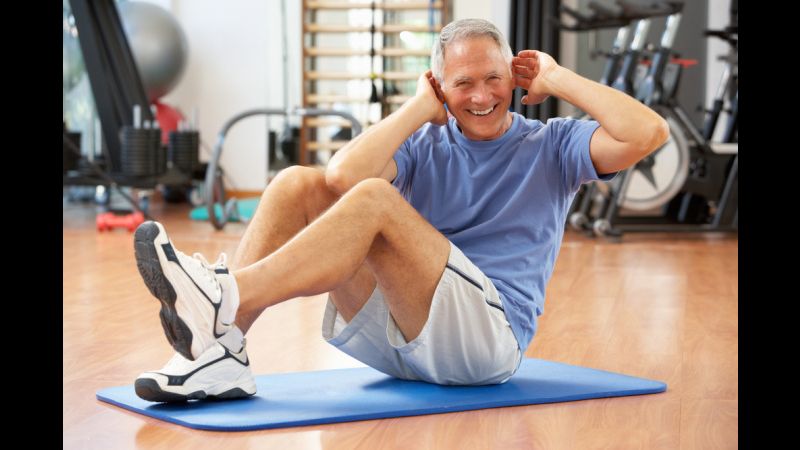Use it or lose it. That’s the reality of getting older. Your ability to stay active is up to you. It can be frustrating to find that you have new physical limitations as you age. But you have a lot more control over your own capacity for exercise and recreational activity than you might think. This capacity is contained in a region of your body called the core. Healthy Living reports that we have 29 muscles in the core, including the stomach, back, hips and pelvis. These muscles are critical to maintaining balance, keeping a healthy posture and reducing the wear and tear placed on your joints by everyday living. As we get older, these normal functions become harder to maintain. This is why it’s so important as you advance in age to develop a core strength training program that you’re comfortable with. By working a few simple exercises into your daily or weekly routine, you can significantly improve your long-term abilities for functionality and fun.
The Benefits As its name suggests, the core is the center of your muscle system. This means that so many other parts of your body stand to benefit from a healthier and fitter core.
- Control: According to Live Strong, strengthening your core muscles gives you greater control over the movement of your extremities.
- Functionality: Live Strong also tells us that seniors who engage in core conditioning can increase their strength by 30% and can improve overall functional performance by 23%. This means that strength training improves your ability to do everyday tasks like cooking, cleaning or household chores.
- Safety: About Senior Living reports that nearly 300,000 seniors are hospitalized every year with fall-related hip injuries. Improving core strength substantially reduces your chances of a fall or other accident. It also reduces your likely recovery time when accidents do happen.
Exercises Healthy Living identifies a few core strengthening exercises that you can do to keep yourself in the game.
- Weight Training: A lightweight, core-focused lifting routine can go a long way toward developing and keeping your core strength. You don’t have to lift much weight in order for your muscles to feel the benefits, which include greater strength, an improved ability for repetitive motion and heightened coordination of movements.
- Stretching: A well-designed stretching program will increase your flexibility, leading to an improvement in your range of motion and a markedly lower chance of activity-related injury.
- Yoga: Meditative exercises that incorporate Yoga or Tai Chi poses have a demonstrated array of benefits extending from the improvement of your core strength. According to Live Strong, a 2010 study showed that seniors participating in a 12-week yoga program experienced a 6% decrease in the fear of falling, a 4% increase in balance and a 34% improvement in hip flexibility.
Tips
- Moderation: As always, everything in moderation. The goal is to strengthen your core without sustaining injury. Start with low-impact activities and stay within your own comfort zone.
- Instruction: Don’t practice alone. Have a caregiver or physical therapist on hand to help you with your routine, to provide you with feedback on your approach and to apply critical first-aid when needed.
- Consultation: Before starting your core strength training program, consult with your physician, physical therapist or primary caregiver. Find out what your limitations are and learn more about the types of exercises that might be most beneficial to you. Everybody has different needs and abilities. Seek qualified advice on designing your very own strength training program.

